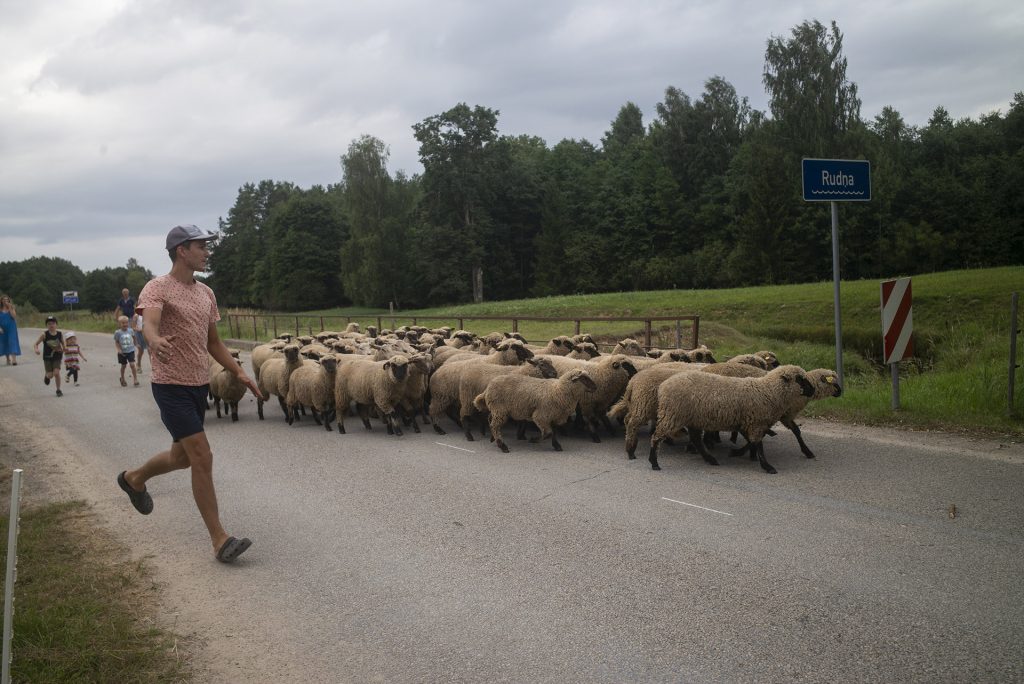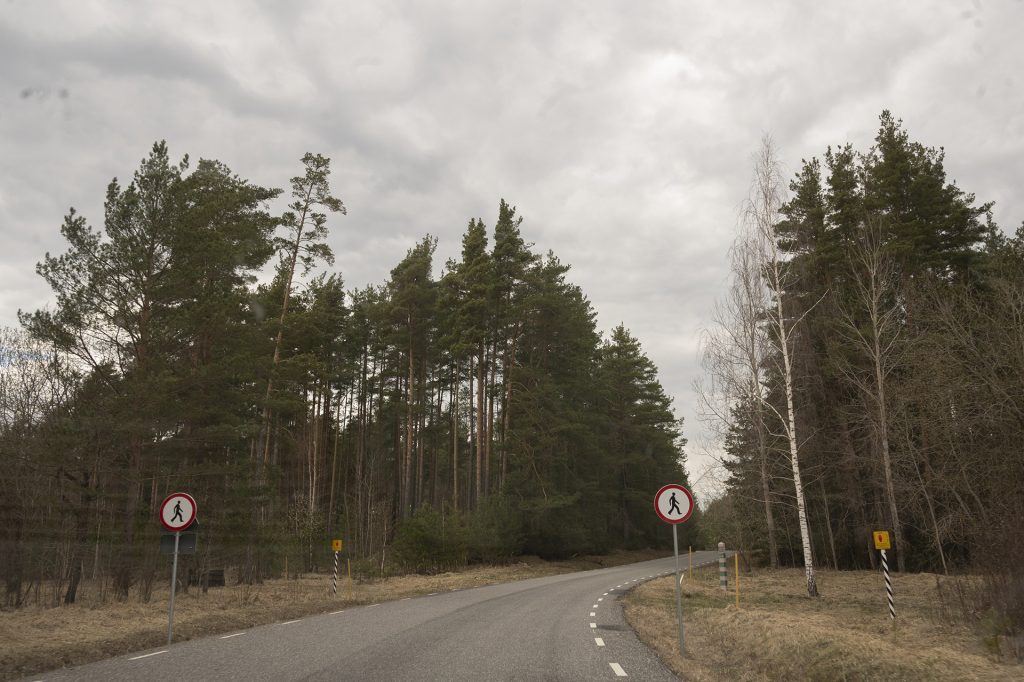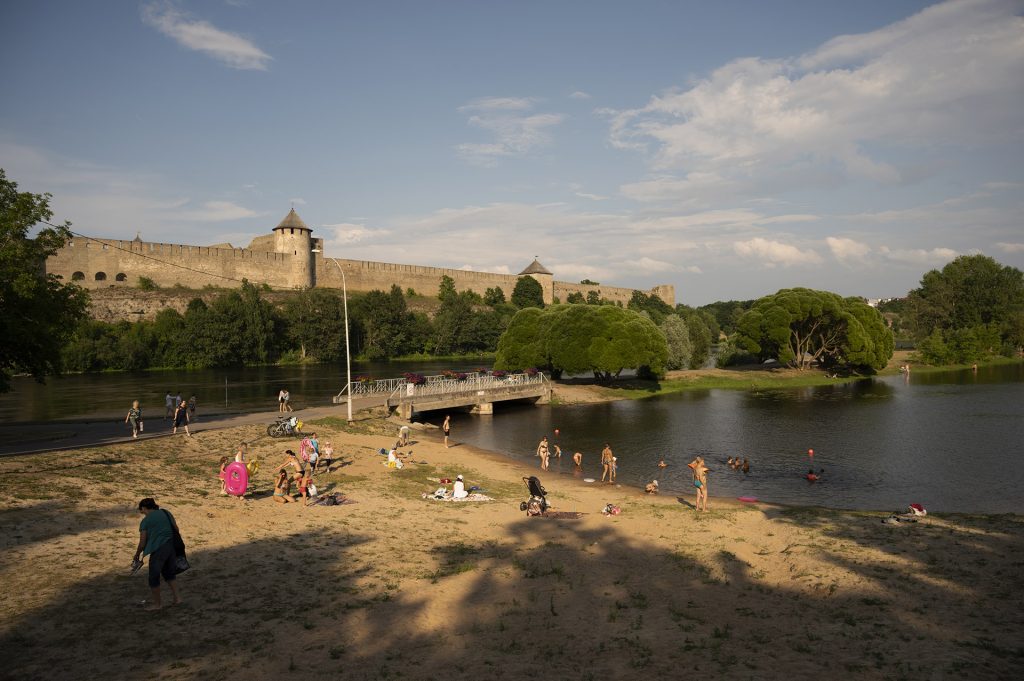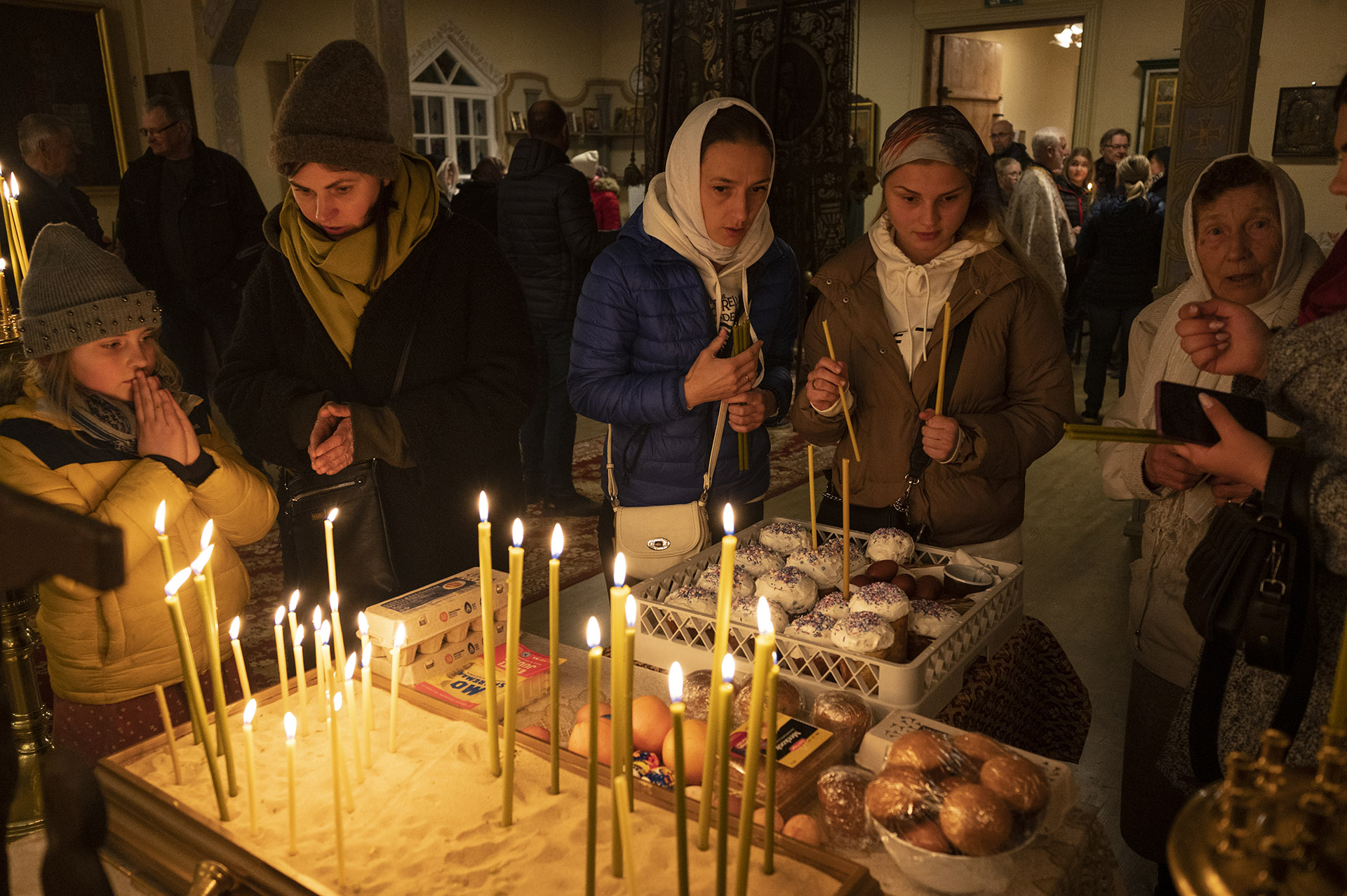The project Baltic Borders, led by photographer and videographer Sami Siva, results from a period of fieldwork in 2021 and 2022 along the eastern borders of Estonia and Latvia. The route covered stretches south from the Gulf of Finland, along the River Narva that makes up the Estonian-Russian border and beside vast Lake Peipus, through the lands of Setomaa and into the Latvian province of Latgale, all the way to the Latvian-Belarusian border at the town of Krāslava. These are and have always been the most culturally and linguistically diverse regions of their respective countries, and as Siva points out “have often been stigmatised as subject to Russian influence and as a potential security threat”.

The major cities along the route – Narva and Sillamäe in Estonia, and Rēzekne and Daugavpils in Latvia – are all majority-russophone settlements, while many of those who identify as Estonian and Latvian speak a somewhat different form of the language, and have an identity that differs from their compatriots elsewhere. Setos, who live primarily in the south-eastern Estonia region of Setomaa, speak a dialect of Estonian but are mostly Orthodox believers in a historically Lutheran country; Siva includes a number of shots of one of their most significant religious ceremonies: Paasapäev or Transfiguration Day, celebrated on 19th August. Many people in eastern Latvia, meanwhile, while identifying as Latvian, speak Latgalian, which is officially defined as a variant of Latvian but which many believe to be an entirely separate language.
The region also hosts a considerable Polish population, while Rēzekne’s Green Synagogue, which was renovated in 2016 and which Siva photographs, is a reminder that this part of the world also was once home to a sizeable Jewish community, largely wiped out by the Nazis and local collaborators.
Several of the younger people Siva speaks to in the border areas of Latvia have lived elsewhere, mostly in Riga, but have returned to Latgale in search of a quieter life or to be closer to family. Liene, from the village of Izvalta near Daugavpils, says it’s often necessary for specialists to move elsewhere to achieve their goals: “we are seen as a less developed region and neglected people. People must prove that this stigma is not always true”. A local in north-eastern Estonia with mixed ethnic heritage makes a similar observation: “Most Estonians don’t want to settle in Narva as there is a lack of infrastructure […] perhaps if the government establishes some university the integration may be faster.”
The title of the project invokes the border, the presence of which has influenced life throughout the adjoining territories in a variety of ways. Some have come here precisely because of its existence: the Russian Old Believers live in settlements throughout the region, having fled here to escape religious persecution in Russia at a time when the eastern parts of modern-day Estonia and Latvia were under the rule of Sweden and Poland respectively. For others, the modern frontier seems arbitrary and interferes with their sense of their community. The borders have changed in both countries since the interwar independent republics, and during the Soviet occupation some territories found themselves reassigned to Russia; the border now slices through much of historic Setomaa (two-thirds of which now lies in Russia). According to Harry Sundell, an expert on the Setos profiled, “we tend to think it’s a border. And of course, in today’s world, it’s a fact, it’s a border. But still, for Setos, it’s only a control line”.
This isn’t the only peculiarity of the border in these parts – the so-called Saatse Boot is the best-known of several roads in the region that very briefly pass through a pocket of Russian territory before returning to Estonia. An agreement ensures that drivers can pass through without needing a visa, but they aren’t allowed to stop their cars in the process.

Siva, who has studied the way that Russia promotes its concept of Russkiy mir (“Russian World”) throughout neighbouring countries, says he was intrigued by “the temporal and spatial aspects and the securitisation of these communities”, with their different backstories affecting their perceptions and general stance towards the state. He observes that while the centuries-old Old Believer communities alongside Lake Peipus are not seen as vulnerable to threats from Russia, the case is different for Russian-speakers in the border city of Narva, a city where the proportion speaking Estonian natively is just 2%. Narva, the largest city in eastern Estonia, was almost totally destroyed in World War II, and consequently much of its population is made up of relatively recent immigrants who relocated to the region during the country’s occupation by the Soviet Union; in highly multicultural Daugavpils, Latvia’s second city, just a fifth of the population identify as ethnic Latvian.
These demographics have often caused outside analysts and media to raise the alarm, viewing the region as perhaps the single most vulnerable stretch of NATO territory. The influence of Russian propaganda is debated – Russian TV stations were widely watched throughout the region, but both countries blocked them in 2022; in the south of Latgale, many people often travel to Belarus for cheaper petrol and other products. Soviet Victory Day, often regarded by the majority population as the start of a new occupation, is still widely celebrated among Russian-speakers. But Siva’s interviews suggest that there is little consensus among the population of the region regarding current affairs and recent changes affecting the region, such as Russia’s brutal invasion of Ukraine, and decisions taken in Tallinn and Riga to remove monuments glorifying the Soviet Union: he speaks to some who justify the war, but more who condemn it.
Nonetheless, Siva warns that “considering the recent developments in the war in Ukraine, it would be complacent to think that Russia (and Belarus) would not launch any kind of direct (and indirect) military operations along the border regions of the Baltic states”.
The impression that remains is one of multiplicity. Joren, a Daugavpils native who runs an NGO in the city and identifies as “first and foremost a person from Daugavpils”, observes that his home town is “woven by hundreds of very different pieces, from different languages and customs, from different stories, gardens, shutters, temples, faces, songs and ideas. It is a large diverse space for exploration and dialogue, for creativity and discovery”

Header image – Easter in Setomaa
All images credit: Sami Siva
You can find out more about Baltic Borders on the project website
© Deep Baltic 2024. All rights reserved.










